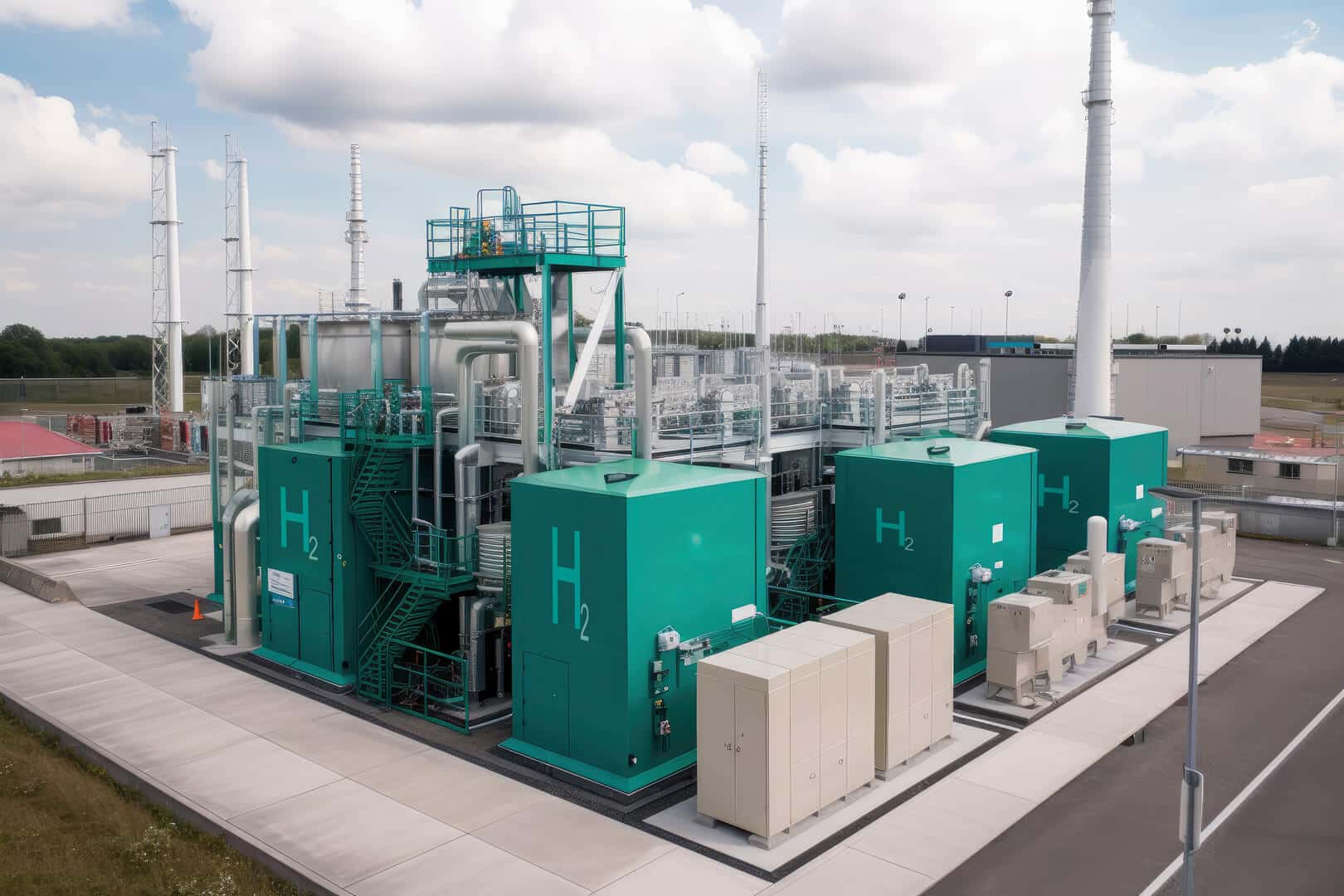Hydrogen as a New Energy Carrier
Hydrogen is not found in pure form on Earth, so it must be produced from other compounds such as natural gas or through hydrolysis from water. In all cases this takes energy. Thus, hydrogen is an energy carrier or storage medium rather than an energy source itself. It is therefore vital to understand that the climate change impact of using hydrogen depends on the carbon footprint of the energy used to produce it.
While any chemist and io’s consultants will point out, hydrogen is a colourless gas. However, the realms of commerce, marketing and public perception have applied a colour scheme to hydrogen. They talk of a grey, blue and green spectrum of hydrogen, where the colour of hydrogen is defined not by appearance, but by the green credentials of its origin and the level of CO2 emissions associated with its production.
The lowest end of the Hydrogen colour spectrum is “Grey” or “Black” hydrogen – Over 95% of hydrogen ever manufactured has been sourced from fossil fuels, with most of this produced using steam-methane reformation (SMR) of natural gas[1]. The emissions from this production are also almost always released without carbon capture in place. This is also currently the least expensive of hydrogen production in absence of any current carbon taxation applied to production.
The next colour in the hydrogen spectrum is “Blue”, the least well defined. Blue hydrogen is produced from fossil fuels, as described above, but includes carbon capture and storage (CCS) to dispose of the CO2 generated during production. In some cases Blue is also applied to hydrogen produced from fossil fuels with carbon emissions “offset” elsewhere via a carbon “negative” project[2] rather than captured. While still dependent upon finite natural gas resources, the use of low-cost Blue and Grey hydrogen can enable the expansion of transmission and distribution infrastructure that is equally suitable to zero-carbon alternatives in the future.
The final colour in the hydrogen spectrum is “Green” hydrogen and typically refers to hydrogen produced via electrolysis powered by renewable energy. This approach is simultaneously the highest-cost method of production, and the method with the largest potential cost reductions. Sources[3] indicate that Green hydrogen production cost is forecast to reduce by 50% to US$2-5/kgH2 by 2030. This business model is driven by three factors: economies of scale from electrolyser manufacturing (to reduce fixed costs), and falling renewable energy (variable) costs[4], and the ability to manage the cyclical electricity availability from renewable energy against the requirement for continuous hydrogen production.
As 100% Green hydrogen (hydrogen produced from renewable energy sources) costs more to produce that hydrogen from Steam Methane Reforming, as we see from the following chart from the IEA.

- Electrolyser efficiency and replacement costs / frequency
- Electrical load ramp-up times and consequential cost savings in grid management, curtailment and reduced wear on rotating equipment
- Electrolyser load capacities – which are current only cost effective at very high load factors
- Battery storage costs – storing electricity is critical in offsetting lack of load from renewable energy when weather conditions are unfavourable, however battery storage at industrial scale is still very expensive. The National Renewable Energy Laboratory (NREL) quotes 4-hour Lithium-ion battery storage in 2018 USD at approximately $375/kwh[6]
- International and domestic liquid hydrogen trading agreements
- Hydrogen export tax agreements
- Carbon tax legislation defining increments for trading Grey, Blue, Green Hydrogen
- Marine carriers for liquid hydrogen transport
- Guidance and policy on land usage for renewable energy sources for hydrogen production as opposed to use for general electricity consumers
- Collaboration between off takers and hydrogen producers on hydrogen quality, colour, transport and usage in developing and maturing international hydrogen supply chains and in further development in contributing to 2050 Zero Emissions
- Assessment of current gas infrastructure for hydrogen enrichment and the introduction of 100% hydrogen-based Gas Turbines for Electricity Production at scale
- Replacement of gas-based domestic boilers with a hydrogen technology-based alternative
References:
- The International Energy Agency. 2019. The Future of Hydrogen: Siezing today’s opportunities. Paris: IEA
- The types of carbon offset projects that are implemented are diverse. They range from forestry sequestration projects (in which carbon credits are gained for the CO2 removed from the atmosphere when trees grow) to energy efficiency and renewable energy projects (which prevent CO2 emissions into the atmosphere).
- Hydrogen from Renewable Power: Technology outlook for the energy transition. Abu Dhabi: IRENA
- IEA – Bruce, Sam, Temminghoff, Hayward, Schmidt, Munnings, Palfreyman, Hartley. 2018. National Hydrogen Roadmap: Pathways to an economically sustainable hydrogen industry in Australia. Melbourne: CSIRO
- https://www.irena.org/-/media/Files/IRENA/Agency/Publication/2019/Sep/IRENA_Hydrogen_2019.pdf
- https://www.nrel.gov/docs/fy19osti/73222.pdf, Figure ES-1 Battery Cost Projections for 4-hour Li-ion systems







